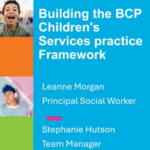A new study suggests that the number of suicides by people with
mental illness could be radically reduced through an overhaul of
the Care Programme Approach. Sarah Wellard reports on ideas for
making mental health services safer for users and the public
alike.
The bottom line test for the effectiveness of mental health
services must be whether they save lives. So the publication last
week of an inquiry suggesting that around 250 suicides and six
homicides every year could be prevented indicates there are still
gaping holes in provision.
Professor Louis Appleby is national director for mental health,
and chairperson of the National Confidential Inquiry into Suicide
and Homicide by People with Mental Illness,which produced its
five-year report on 17 March.1
“I don’t agree with people who say many of these deaths are
inevitable,” he says. “The inquiry has identified some of the
weaknesses in the system. If we can tackle these we ought to be
able to reduce the numbers.”
The inquiry calls for a major overhaul of the Care Programme
Approach (CPA), introduced in 1991 as a framework for the aftercare
of psychiatric patients then being discharged from long-stay
institutions. CPA involves the allocation of a key worker; carrying
out a needs assessment, including a risk assessment; and the
development of a care plan. There are three levels of CPA according
to the severity of a patient’s illness and their degree of
vulnerability. For patients on the highest level, known as enhanced
CPA, regular multidisciplinary meetings should take place to review
the care plan.
The report recommends that there should be national criteria for
CPA emphasising the importance of assessing risk. Enhanced CPA
should normally apply to patients with schizophrenia, people with
severe mental illness who have a history of self-harm or violence,
homeless people who have spent time as psychiatric in-patients and
to people with severe mental illness who are lone parents.
The problems with CPA lie with how effectively it is applied.
Ten years after its introduction, there is evidence that it has
still not been properly implemented in some areas.
Michael Howlett, director of the Zito Trust, describes the case
of a family who contacted the trust because of their concerns about
their 20-year-old son. “They were trying to get him admitted to a
London teaching hospital. The hospital told them, ‘We don’t do the
CPA here.’ That’s just not acceptable. The young man in question
subsequently killed himself.”
Howlett believes that even where CPA is applied, staff do not
always have the skills to recognise patients who are at risk or
need extra supervision and care. He says: “The CPA has been beset
with problems. People are not being put on the right level. Part of
the problem is that risk assessment protocols aren’t sophisticated
enough.”
But the value of the inquiry, as David Joannides, spokesperson
on mental health for the Association of Directors of Social
Services points out, is that staff can use the findings to improve
practice and enhance users’ safety.
He says: “The evidence is that we are getting better at
assessing risk. The indices are becoming more reliable. Mental
health teams now have better information about what combinations of
factors put individuals at high risk and so can use their time more
effectively.”
However, Joannides questions whether it is realistic for
everyone with schizophrenia to be placed on enhanced CPA, in part
because of the difficulties that both health and social services
are experiencing in recruiting and retaining mental health
professionals. He says: “We need to look closely at all the risk
factors that make a person susceptible to breakdown. We have to be
realistic about the resources we have at our disposal, and use them
where they will be most effective.”
A key finding of the inquiry is that people with mental health
problems are most at risk when they are admitted to hospital and
just after discharge. Forty per cent of deaths – 600 a year – occur
during this period. Around a quarter occur within the first three
months after discharge, with a peak during the first couple of
weeks after leaving. Appleby says: “It indicates that there is a
fault-line between in-patient and community services. People are at
maximum risk when they first come out of hospital.” He explains
that although in some cases people are self-discharging, making it
harder for services to respond quickly, the suicide risk also
applies to people discharged by health staff.
The report recommends that people receive closer supervision
after they are discharged from hospital, and receive a follow-up
within a week of leaving.
Melba Wilson, director of policy at Mind, says that improved
communication between health and other agencies working in the
community is also vital. “Inquiry after inquiry has pointed up the
need for closer working. Housing, social services and mental health
teams need to help people pick up the strands of their lives and
make sure they do not get lost. More often than not agencies still
are not talking to one another.” Wilson believes that health
professionals sometimes fail to see the potential for partnership
with other agencies working in the community. She says: “A lot of
work is being done by voluntary groups but community mental health
teams are divorced from it. They don’t always pick up on the
expertise that is out there.”
The Mental After Care Association is also concerned about the
poor quality of care plans for enhanced CPA. John McKelvie,
regional director for Maca’s southern region, stresses the
importance of involving patients in their care. He says: “Plans
must be in place before discharge and must be meaningful to the
user. Plans will not work unless users feel they own them and that
they can fall back on them if they are feeling suicidal.”
Another key recommendation from the inquiry is that enhanced CPA
should include explicit plans for responding to non-compliance. In
about one fifth of cases, patients were not taking their medication
at the time of death. The inquiry recommends increased availability
of new anti-psychotic drugs that do not have the unpleasant
side-effects. But the new drugs cost around £20 a day compared
with the £5 suggested by the National Institute for Clinical
Excellence in its guidance on use.
There is also widespread agreement that the historical
under-funding of mental health services is a continuing problem.
New resources will be rolled out over the next three years.
By 2003 every part of the country will be covered by an
assertive outreach team working with some of the most vulnerable
and high risk groups, including homeless people and people with
drug or alcohol addictions as well as mental health problems.
Appleby says that by the end of March 170 teams will have been
established, ahead of the government’s target.
Another important initiative is the introduction of teams to
provide intensive support for people at home, with the aim of
reducing psychiatric admissions. And a number of health trusts are
establishing community based alternatives to hospital for people in
crisis who need some form of in-patient care.
Appleby is upbeat. “We ought to see a reduction in suicides
among patients. We’re certainly moving in the right direction to
offer a more comprehensive and flexible service.”
1 National Confidential Inquiry into Suicide and
Homicide by People with Mental Illness, Safety First – Five
Year Report of the National Confidential Inquiry, Department
of Health, 2001. And at www.doh.gov.uk/mentalhealth/safetyfirst
For more on mental health click
here and search using the words “mental health”
Key findings of inquiry
- 25 per cent of all people committing suicide between 1996 and
2000 had been in contact with mental health services in the year
before death – around 1,500 cases a year. - About a quarter of the cases examined by the inquiry died
within three months of discharge from in-patient care. - 47 per cent of suicide cases in touch with mental health
services were on enhanced Care Programme Approach. - Around 20 per cent of suicide inquiry cases were not taking
their medication a month before their death. - In nearly a third of suicides in the community, people had
missed their last appointment with services. - Around a third of perpetrators of homicide had a diagnosis of
mental disorder, most commonly alcohol or drug dependence and
personality disorder. - 9 per cent of people committing homicide in England and Wales
had been in contact with mental health services in the year before
the offence.
Key recommendations
- All patients with severe mental illness and a history of
self-harm or violence to receive the most intensive level of
care. - Individual care plans to specify action to be taken if patient
is non-compliant or fails to attend. - Staff to receive training in risk management for both suicide
and violence every three years. - Prompt access to services for people in crisis and for their
families. - Assertive outreach teams to prevent loss of contact with
vulnerable and high-risk patients. - Follow-up within seven days of hospital discharge for everyone
with severe mental illness or a recent history of self-harm.
From Safety First – Five Year Report of the National
Confidential Inquiry into Suicide and Homicide by People with
Mental Illness, 2001.



 Bournemouth, Christchurch and Poole
Bournemouth, Christchurch and Poole  Hampshire County Council
Hampshire County Council  Oxfordshire County Council
Oxfordshire County Council  South Gloucestershire Council
South Gloucestershire Council  Wokingham Borough Council
Wokingham Borough Council  Webinar: building a practice framework with the influence of practitioner voice
Webinar: building a practice framework with the influence of practitioner voice  ‘They don’t have to retell their story’: building long-lasting relationships with children and young people
‘They don’t have to retell their story’: building long-lasting relationships with children and young people  Podcast: returning to social work after becoming a first-time parent
Podcast: returning to social work after becoming a first-time parent  How managers are inspiring social workers to progress in their careers
How managers are inspiring social workers to progress in their careers  Workforce Insights – showcasing a selection of the sector’s top recruiters
Workforce Insights – showcasing a selection of the sector’s top recruiters  Unlocking independence: how ASDAN gives care leavers choice and control over their future
Unlocking independence: how ASDAN gives care leavers choice and control over their future 

 Facebook
Facebook X
X LinkedIn
LinkedIn Instagram
Instagram
Comments are closed.